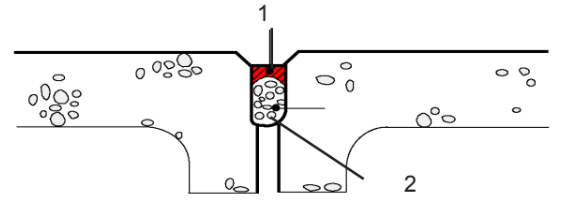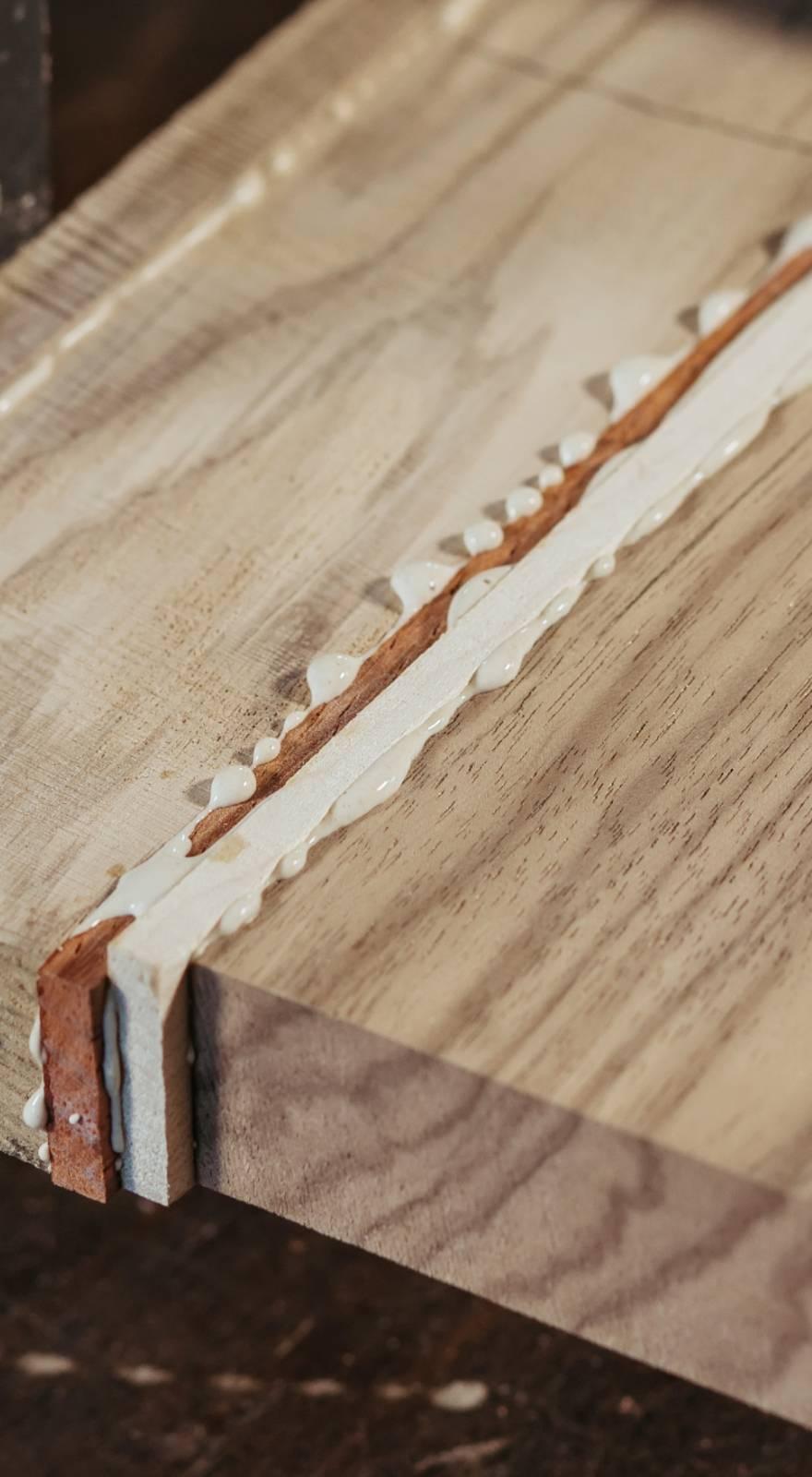Knowde Enhanced TDS
Identification & Functionality
- Chemical Family
- Product Type
- Technologies
- Product Families
Features & Benefits
- Labeling Claims
- Ready-to-Use Product Features
- Advantages
- Will not stain masonry, marble or other surfaces.
- Excellent primer-less adhesion to most common building materials.
- Can be applied to damp substrates
- Fast neutral cure.
- Highly flexible with excellent application characteristics.
- Low odor, environmentally friendly.
- Low modulus and high movement capabilities.
- Excellent UV and weather resistance
- Performs as an acoustic sealant
- Good adhesion to silicone, polysulphide or polyurethane contaminant.
Applications & Uses
- Markets
- Applications
- Application Area
- Uses
Nitoseal MS100 has been formulated for stain-free sealing of joints in and around concrete, brick, masonry, pre-cast panels, stone cladding, windows, doors and fiber cement sheeting.
- Application Instructions
Preparation - Joint surfaces must be clean and free from frost and rag dry, preferably completely dry. Remove all dirt, laitence, loose materials and foreign matter. Remove all rust, scale and protective lacquers from metal surfaces. Non porous surfaces should be degreased using Fosroc Equipment Cleaner. In all joints an Expandafoam or Hydrocell XL polyethylene foam backing should be used to prevent sealant contact with the back of the joint, and hence allow optimum performance. In shallow joints self adhesive debonding tape can be used.
Priming - Good adhesion can be gained on concrete, timber, metals, ceramics, brickwork and most coating surfaces without the use of primers. On some porous surfaces such as GRC, adhesion will be improved by the use of a primer - refer Fosroc Technical Service for further advice.
Application
- Cartridge - Cut the end off threaded stub on cartridge, screw on nozzle and cut nozzle to desired bead size at a 45o angle. Extrude the sealant firmly into joint to ensure complete contact with joint faces. Smooth finish if necessary with a spatula wetted with a dilute detergent solution.
- Cleaning - Clean tools immediately after use with Fosroc Equipment Cleaner.
- Overpainting - The practice of overpainting sealants which experience a high degree of movement is discouraged as it can result in premature failure of the sealant. However, Nitoseal MS100 may be overcoated with water- based elastomeric coatings such as Dekguard Elastic and exterior emulsion paints such as Dekguard W. Tests should be carried out to confirm compatability of sealant and proposed paint systems. Nitoseal MS100 should be allowed to cure fully before the application of the coating or paint. For best results the sealant should be allowed to weather prior to overcoating.
- Estimating
Nitoseal MS100 is supplied in 380 ml cartridges and 600ml sausages.
To work out quantities (excluding wastage) use the following formula:
S/(W x D) = Lineal meters per pack
S = Packaging size in milliliters
W = Sealant profile width in millimeters
D = Sealant profile depth in millimetersGuide to sealant quantities
Joint size in mm Liter per meter run Meter per 0.38 liter cartridge 3 x 5 0.015 25.3 3 x 10 0.03 12.66 5 x 5 0.025 5.2 5 x 10 0.05 7.6 10 x 5 0.05 7.6 10 x 10 0.1 3.8 15 x 10 0.15 2.54 20 x 10 0.2 1.9 25 x 15 0.38 1 These are theoretical yields. No allowance has been made for variation in joint dimensions or wastage.
- Limitations
Nitoseal MS100 must not be used as follows:
- Where adhesion is required to polyethylene, polypropylene, polybutylene, polycarbonate and bitumen.
- Where it is subjected to permanent immersion in water.
- With structural glazing or floor joints.
- With pipes or in other applications where it may be subjected to hydrostatic or pneumatic pressures (other than wind pressure).
- Where continual exposure to aggressive solvents or chemicals will occur.
- Where timber or wood based products have been painted.
- Nitoseal MS100 is a combustible material. Do not seal around chimney or flues.
- Do not overpaint with oil based alkyd paint systems.
- Should not be considered a substitute for a good standard of joint preparation.
- Joint arrises should be primed where movement in excess of 25% is expected.
- Example of Sealed Movement Joint in external Joint Panels

- Nitoseal MS100
- Expandafoam Cord
Properties
- Typical Properties
| Value | Units | Test Method / Conditions | |
| Application Range (Uncured Sealant) | 5 - 50 | °C | - |
| BAAQMD Reg 8 Rule 51 | Passes | - | - |
| Cure Rate (Uncured Sealant, 24 hrs, 20°C, 50% RH) | 3.0 | mm | - |
| Cure Rate (Uncured Sealant, 7 days, 20°C, 50% RH) | 8.0 | mm | - |
| E-Modulus (Cured Sealant) | max. 0.4 | N/mm2 | ISO 8339 |
| Elongation (Cured Sealant) | min. 900 | % | ASTM D412 |
| Flash Point (Uncured Sealant) | min. 65 | °C | - |
| LEED EQc4.1 | Passes | - | - |
| Modulus Classification | Low | - | - |
| Movement Accommodation Factor (Butt Joints, Primed) | 50.0 | % | - |
| Movement Accommodation Factor (Butt Joints, Unprimed) | 25.0 | % | - |
| Movement Accommodation Factor (Lap Joints, Primed) | 100.0 | % | - |
| Movement Accommodation Factor (Lap Joints, Unprimed) | 50.0 | % | - |
| SCAQMD Rule 1168 | Passes | - | - |
| Service Temperature | -40 - 70 | °C | - |
| Skinning Time (Uncured Sealant, Depending on Ambient Conditions) | max. 2 | hours | - |
| Solids Content (Uncured Sealant) | 100.0 | % | - |
| Hardness (Cured Sealant, 20°C) | 20.0 | Shore A | - |
| UV Resistance | Excellent | - | - |
Regulatory & Compliance
- Certifications & Compliance
- Standard Compliance
ISO 11600 Type F 25LM
Performs as an acoustic sealant to:
- BS EN ISO 140-3:1995 Laboratory measurement of airborne sound insulation of building elements
- BS EN ISO 717-1:1997 Rating of sound insulation in buildings and of building elements. Airborne Sound Insulation.
Technical Details & Test Data
- Design Criteria
Movement Accommodation Factor (MAF)
The Movement Accommodation Factor is a figure quoted indicating the ability of a sealant to accommodate joint movement throughout the service life of that sealant, expressed as a percentage of the joint width at time of sealing. To calculate the theoretical / minimum joint width knowing the expected maximum working movement of the joint:
W = M (MAF/100) + M
W = Joint width
M = Expected maximum working movement of joint
MAF = Movement Accommodation Factor of that sealantFor further advice on joint design see BS 6093 :2006 + A1:2013.
Nitoseal MS100 may be applied to joints between 5 and 35 mm wide. To minimize stresses imposed on the joint sealant, all moving joints should be designed to an optimum width to depth ratio of 2:1.
This ratio is subject to these overriding minimum sealant depths:
5 mm minimum sealant depth at any point.
5 mm minimum bonding depth against metals, glass and other non-porous surfaces, providing that joint faces are in good condition.
8 mm minimum bonding depth against masonry or other porous surfaces, or any non-porous surfaces where joint faces are in poor condition.
Shear joints shall be a minimum joint width to depth ratio of 1:2 up to a maximum of 1:1. The total movement in shear should not exceed 80% of joint depth at time of sealing in these joints.Sealants are now commonly used as weatherseals in place of flashings and scribers around window and door openings.
These areas require greater attention to detail and standards of workmanship to perform successfully.
Packaging & Availability
- Colors
White, Gray and Black (other colors available see local Fosroc office)
Storage & Handling
- Storage
Cartridges: Shelf life of 12 months if kept in a dry store at 10 – 20°C in original unopened packaging. If stored at high temperatures and / or high humididy, the shelf life may be significantly reduced.







